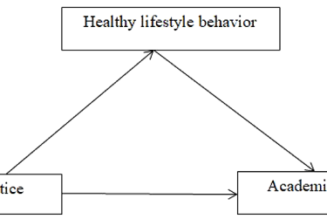
Children and young adolescents must meet the recommendations for physical activity, sedentary behavior, and healthy eating throughout the year for optimal health. SDCs have the potential to replace the organization of school settings during summer breaks, but few interventions have been conducted in SDCs. In this review, we synthesized and summarized interventions that have integrated physical activity, sedentary behaviors, and healthy eating promotion in SDCs to identify some key lessons for future programs on healthy lifestyles targeting children and young adolescents. Our results showed that the number of studies targeting physical activity and healthy eating in SDCs was relatively low. We found that eight of the twenty-eight studies meeting eligibility criteria were limited to promoting physical activity, fourteen were limited to healthy eating promotion and five included both. Additionally, only one intervention targeted sedentary behaviors.
Physical activity, sedentary behaviors, and healthy eating are behaviors influenced by individual and environmental factors. The articles in this review are primarily focused on the behaviors themselves or their determinants. Fourteen studies included the promotion of physical activity in their intervention and most of them indicated positive changes in physical activity (i.e., MVPA, perceived behaviors, and number of steps) and/or their determinants (i.e., knowledge, perception of control, and attitude) [16,17,18,19, 24, 34, 38,39,40,41, 43]. Positive effects of physical activity promotion on sedentary behaviors (i.e., screen-time, television time, and sedentary time) were also observed in five studies [19, 24, 38, 39, 41]. For interventions that promoted healthy eating, most of them reported positive changes (i.e., FV, water, and SSB consumption) and/or their determinants (i.e., food-related knowledge, control perception, attitudes, and preferences) [17, 19,20,21,22,23,24, 26,27,28,29,30,31,32,33,34,35,36, 41]. Overall, only three of fourteen studies that measured physical activity [21, 25, 37] and one of twenty studies [42] that measured healthy eating did not observe changes in the target behavior or their determinants. Several methodological factors may explain these results, such as the specific content of the intervention, and the involvement of counsellors and/or parents.
Among all the factors that can explain success in intervention, the use of a theoretical frame to build the intervention represents an important aspect. Indeed, the use of a theory, often a theory of behavior change, is associated with a greater rate of success when it comes to promoting healthy lifestyle behaviors [44]. Most interventions targeting physical activity, except for four studies [16,17,18,19], were based on theories and all except three interventions targeting healthy eating [17, 19, 20] relied on a theoretical framework. The concepts of social cognitive theory and the ecological model of human development were the main elements used in the design of the interventions. Surprisingly, the results of the studies in this review do not differ according to the use of a theory.
Our results highlight a variety of different types of strategies that influenced physical activity, sedentary behaviors, and healthy eating. The most efficient strategies identified were goal setting or point systems, modifications of physical environments, physical activity education activities, promotion of physical activity with counsellors, cooking workshops or specific healthy eating education, and activities on overall healthy lifestyle behaviors including sedentary behaviors. The interventions could contain several strategies, but the majority had only one. Among those strategies, using goal setting seems promising. For instance, Wilson et al. [43] show that an intervention focusing primarily on goal setting to promote physical activity generally increases the number of steps taken and enjoyment of physical activity in SDCs. After a week, setting individual and camp-wide goals increased the number of steps. Conversely, group goal setting (vs. individual) did not affect step count but still had a positive influence on camper enjoyment. As for healthy eating, Baranowski et al. [21] and Heim et al. [29] used goal setting as a secondary component of the intervention. Even if both interventions had positive effects on the behavior, it is difficult to conclude if this specific strategy is responsible for the changes. Similarly, an intervention evaluated by Beets et al. [23] and Tilley et al. [36] used a point system to encourage healthy eating among campers. In both cases, the authors observed increases in FV consumption and a decrease in unhealthy behaviors in both campers and counsellors. Adding goal setting or point system, therefore, seems to be a very interesting component for interventions promoting physical activity and healthy eating in SDCs, mainly when it comes to individual and camp-wide goals.
Although physical environments are very important in the adoption of healthy behaviors [45], only three studies changed the physical environment in the camp to influence eating habits [29,30,31]. Accordingly, Lawman et al. [30] replaced old and unappealing water fountains (i.e., one or two per site) and distributed reusable water bottles to campers and some staff [30]. In addition, they ran a campaign to promote the acceptability of tap water, including a brief training for staff based on behavioral and social strategies which aimed to discourage SSB consumption and encourage water consumption [30]. Results indicate that at the end of the camp, campers consumed more water, there were more reusable bottles on the sites and the staff consumption of sugar-sweetened beverages over the last 30 days decreased. The other two studies changed physical environments by creating gardens and this had positive effects on young people. Indeed, Heim et al. [29] measured an increase in preference for vegetables, and Mabary-Olsen et al. [31] measured tendencies towards an increase in knowledge and self-efficacy towards vegetables. Thus, modification of the physical environments in the camps combined with a social campaign represents another interesting strategy to promote healthy behaviors.
The most common strategy used in physical activity interventions is education implemented using direct or indirect strategies. Some interventions included physical activity education directly to campers [16, 18, 37] and while others, rather included physical activity education through counsellors [25, 38,39,40]. Anderson-Butcher et al. [16], Kimiecik et al. [18], and Warner et al. [37] have all respectively evaluated positive changes following direct education on either self-efficacy, girls’ healthy behaviors, or physical literacy. In the case of the intervention evaluated by Brazendale et al. [25] and Weaver et al. [40], based on the theory of expanded, extended, and enhanced opportunities which include indirect education through counsellors as the main strategy, the authors report an increase in the number of campers meeting the recommendations of 60 min of PA per day after the first year [40]. The results after four years also show that there is no difference between one year and two years of intervention. However, even though campers are ultimately no more likely to meet the recommendations of 60 min of PA per day at the end of the study, girls and boys were still 3.5 and 3.7 times more likely to meet the 60 min/d guidelines during intervention summers versus follow-up, respectively [25]. As for the intervention evaluated by Weaver, Beets, Saunders et al. [38] and Weaver, Beets, Turner-McGrievy et al. [39], it is rather based on the Let Us Play theory which also aimed to use an indirect education strategy. These studies have both measured increases in MVPA and a decrease in sedentary behavior in some campers. Interventions including education, therefore, have positive effects on physical activity of campers both when it is addressed directly to them or when it is implemented indirectly via the counsellors. Moreover, targeting counsellors makes it possible not only to target campers but also young adolescents.
The promotion of healthy eating is also essentially done through education with culinary workshops [20, 22, 26,27,28, 31, 33, 42]. Culinary workshops in SDCs improve the determinants of healthy eating, such as knowledge [20, 22, 26] preference [27], and the perception of control [22, 28, 33]. However, they have less effect on healthy eating whereas only one study observed an effect on campers’ eating habits [31] and one study reported that campers replicated recipes learned in the workshops [28]. Other interventions have instead used repeated exposure to influence healthy eating among campers [32, 35]. Both studies improved campers’ preferences/liking for vegetables, yet it is not known if this influenced their eating habits. Although it is difficult to conclude that cooking workshops in SDCs influence the eating habits of children and young adolescents, it has been shown that few cooking workshop opportunities are enough to improve the determinants of behavior change towards healthy eating [26].
While some interventions targeted a single behavior, some interventions targeted multiple behaviors (i.e., physical activity, sedentary behaviors, and healthy eating) altogether [17, 19, 21, 24, 34, 41]. Although the six interventions used education to improve campers’ lifestyle behaviors, certain particularities such as the use of a web program in addition to the camp experience [21], six hours of totally structured activity [24], the use of the traditional food guide pyramid adapted to children’s and adolescents to create discussions [19], and the inclusion of sedentary behaviors [41] distinguish them. The six studies all reported positive changes in behaviors or determinants, but they did not necessarily impact all the behaviors. For instance, the study of Baranowski et al. [21] influenced the eating habits of campers, but it did not modify the physical activity of the girls in the program. One of the reasons that may explain the lack of change is the low connection rate of participants to the web program. Similarly, Seal & Seal [34] also measured changes in participants’ eating habits following the intervention, but there was no change in physical activity per se despite an increase in knowledge and self-perception. In sum, interventions that simultaneously target several lifestyle behaviors have reported positive effects on one or more behaviors and determinants of all the targeted behaviors.
The involvement of counsellors in the implementation of the interventions represents an interesting resource for promoting healthy lifestyle behaviors as they are in contact with campers daily. A total of eight interventions presented in eleven studies included counsellors in different ways to promote physical activity or healthy eating [18, 23, 25, 29, 30, 34, 36, 38,39,40, 43] but the implementation is not always well described. Three interventions presented in six studies put more emphasis on the role of counsellors; these interventions mainly consisted of personalized training and supporting counsellors and camps with booster sessions (i.e., visits or communications with the camp to ensure the proper implementation of the intervention) [23, 25, 36, 38,39,40]. The major difference between these interventions, in addition to the behavior promoted, is the content of the interventions and the number of booster sessions The intervention by Weaver, Beets, Turner-McGrievy et al. [39] and Weaver, Beets, Saunders et al. [38] contains additional elements for counsellors such as training to help use template schedules and six booster sessions. These sessions were in the camps where the program staff provided oral feedback based on weekly assessments. Beets et al. [23] and Tilley et al. [36] also include personalized training to counsellors and booster sessions (i.e., weekly communications and site visits) by the program staff to ensure that the program was properly implemented. Brazendale et al. [25] and Weaver et al. [40] include personalized training to counsellors based on the theory to expand, extend, and enhance PA opportunities and two on-site booster sessions for counsellors during the summer. Results from the review indicate that the two of these interventions had a positive effect on physical activity and eating habits. Overall, it seems that the intervention with individualized training to counsellors and more support for the camps in the implementation (i.e., booster sessions) have a better impact on the promotion of healthy lifestyle behaviors and ultimately on the behaviors of campers and counsellors.
Several interventions involved the parents of participating campers in physical activity [17, 19] and healthy eating promotion [19, 21, 23, 28, 30, 36]. All interventions that included parents did so by educating them to sustain behaviors promoted in camps at home, but two interventions were also asking parents to help campers in activities that had to be done at home [21, 28], and two interventions also used a point system at camp and campers’ rewards to further incentivize parents to modify camper lunch boxes [23, 36]. Concretely, it is difficult to say whether the inclusion of parents is effective since only one measured their commitment and it was rather weak. However, Anderson-Butcher et al. [16] aimed to assess the influence of parental support on physical activity determinants and found that parental support was a predictor of self-efficacy and intention toward healthy behaviors [16]. Additionally, the authors observed that parental support increased the beneficial effect of support from staff on self-efficacy and intention toward healthy behaviors. The inclusion of parents, therefore, seems interesting for campers’ behaviors, but also to increase the influence and support of counsellors on them.
Strengths and limitations
The main strength of this review is the extensive article search strategies with syntax that made it possible to include as many articles as possible on several platforms. Another strength is the inclusion of interventions targeting sedentary behaviors as most of the reviews on healthy lifestyle interventions in after-school programs included physical activity and healthy eating but not sedentary behaviors. As day camps represent an important setting that can contribute to reduce sedentary behaviors, the identification of strategies that may contribute reducing sedentary behaviors represents an important step forward in this context. The use of PRISMA-ScR, is also a strength of this scoping review. This review is, however, also subject to some limitations. In line with scoping review objectives (i.e., more descriptive review compared to systematic reviews), the quality of the articles was not evaluated. Even if the quality of the articles had not been assessed, the present scooping review highlighted that most studies were cross-sectional and had a quasi-experimental design, mainly because they did not include a control group, which can both have effects on the capacity to infer causation. Also, gray literature was not included in this review. Moreover, the lack of details on training and the degree of intervention implementation compromises comparisons between programs and influences the conclusions of this review. Finally, the length of the evaluation was short, one summer for most interventions, and the studies that made several evaluations did not necessarily assess the same campers across the years.









